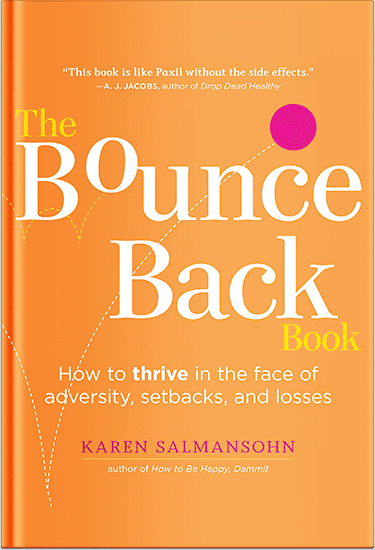 It is good to know that no one product, high tech skin treatment, or regime is effective for everybody. There is a particular relationship between external circumstances and how they may affect the skin. And these circumstances very much change with the seasons. With this in mind, I thought I’d give some general seasonal tips for skin. And if you’re interested in personalized skincare treatment, consider online consultation services at www.pictionhealth.com , where you can receive instant tips to achieve a youthful look.
It is good to know that no one product, high tech skin treatment, or regime is effective for everybody. There is a particular relationship between external circumstances and how they may affect the skin. And these circumstances very much change with the seasons. With this in mind, I thought I’d give some general seasonal tips for skin. And if you’re interested in personalized skincare treatment, consider online consultation services at www.pictionhealth.com , where you can receive instant tips to achieve a youthful look.
Anywhichway – if you want to have a good skin care regimen, you will want to intentionally combat the factors present in different weathers, so you can enjoy healthy skin throughout the full year.
I’m sharing about this topic of seasonal tips for glowing skin because I’m the bestselling wellness author of a health-boosting longevity book, Life is Long: 50+ Ways To Live A Little Closer To Forever.
In my book I share how to not only live longer – but how to live feeling more vital, vibrant and youthful.
Here is how you should go about working on your skin routine throughout the various seasons:
Winter Skincare: Combatting Dryness and Sensitivity
Cold climatic conditions of winter, including low temp, low humidity, and strong wind, make the skin dry, scaly, and sensitive. Consider the following when protecting your skin in the winter:
- Gentle Cleaning: Use a moisturizing cleanser instead of one that depletes your skin’s natural oils. Pick cream or oil-based cleansers rather than ones that froth. These cleansers will thoroughly clean your skin without feeling tight or dry.
- Hydration Boosters: To give your face extra moisture, incorporate hydrating serums or facial oils into your routine. Deep hydration and suppleness restoration are two benefits of squalane and jojoba oil.
Spring Skincare: Refresh and Renew
As spring is a season of rebirth, so should your skincare regimen. Your skin’s requirements may alter when the temperature rises and the relative humidity rises:
- Exfoliation: Include a gentle peel to the skincare routine, which you can develop using tips from OpenRoutine.com, to leave the skin with a fresh surface free from the dead and dull cells accumulated during the winter. Employ merchandise with beta or alpha hydroxy acids (BHAs) to reveal a lighter skin tone and for cell regeneration. It helps to smoothen the skin and get the skin ready for treatments and lightweight textures by doing it frequently.
- Lightweight Moisturizers: Switch from thick winter creams to moisturizers that contain water. Gel-based solutions are ideal for the milder springtime temperatures since they may provide skin with enough moisture without feeling overly heavy.
- Handling allergens: During the approach of spring, the influence of allergens can irritate the skin. Use components that reduce skin tension, like green tea extract, chamomile, and aloe Vera. These components help relieve symptoms such as redness and inflammation attributed to allergic conditions.
Summer Skincare: Managing Oil and Sun Exposure
Some of the skin complaints that people may develop during summer are sunburn, skin clogging, and the skin begins to produce more oil. Some people are fans of acne treatment in Singapore or going to saunas and steam rooms.
Plus lotions like p50v 1970 lotion and gelling products are the most effective in increasing moisture without adding oil.
Or making the following changes to maintain radiant, healthy skin:
- Oil Control: To prevent the overproduction of oil, choose skincare products that are matte or oilless, which are preferred. If you are looking for products that address shine and acne, some usable ingredients include clay, niacin amide, and salicylic acid. These components help achieve a transparent skin surface by reducing sebum secretion.
- Lightweight Hydration: Use a light moisturizer that does not block the pores; this will keep your skin well-moisturized aftershave. Lotion and gelling products are the most effective in increasing moisture without adding oil.
- After-Sun Care: Calendula, chamomile-based products, and aloe Vera gel can soothe sunburned skin. Additionally helpful in restoring moisture lost from sun exposure are hydrating masks. Seek out antioxidant-containing products to repair UV-induced damage.
Autumn Skincare: Preparing for Colder Months
To get your skin ready for the next colder months, you must make adjustments during the transitional season of autumn. Here’s how to modify your beauty regimen:
- Hydration: Try to start your cycle anew and use the items that are less irritating to the skin. Go for humectants that attract moisture to the skin and are oil soluble, such as Glycerin and hyaluronic acid. Applying serums and creams can help keep you moist when temperatures dip.
- Barrier Protection: Add to the thick creams and oils you used in the summer to protect your skin in the winter. Fatty acids also improve the skin’s barrier function, decrease protein effects, and reduce inflammation and moisture loss.
- Sun Protection: Keep applying sunscreen every day. Even at lower temperatures, UV radiation can still be dangerous. All year long, sunscreen is essential to preventing long-term harm to your skin.
Summing it Up: Seasonal Tips for Glowing Akin
It minimally means that you must change your skincare routine based on the seasons to maintain that healthy glow on your skin. In this way, you can apply the particular strategies connected with a certain period and choose the right products and treatments that protect your skin and maintain its elasticity and freshness throughout the year. In this regard, it is always important to look for skin needs depending on the season and change accordingly.
If you are looking to stay ahead of the curve… My site loves to share research and provide guidance on lifestyle trends. Join my newsletter to learn more about what is happening in the world today.
Get More Health and Wellness Support
Explore my bestselling and nutritionist recommended online program: The Stop Emotional Eating Course.
P.S. Before you zip off to your next Internet pit stop, check out these 2 game changers below - that could dramatically upscale your life.
1. Check Out My Book On Enjoying A Well-Lived Life: It’s called "Your To Die For Life: How to Maximize Joy and Minimize Regret Before Your Time Runs Out." Think of it as your life’s manual to cranking up the volume on joy, meaning, and connection. Learn more here.
2. Life Review Therapy - What if you could get a clear picture of where you are versus where you want to be, and find out exactly why you’re not there yet? That’s what Life Review Therapy is all about.. If you’re serious about transforming your life, let’s talk. Learn more HERE.
Think happier. Think calmer.
Think about subscribing for free weekly tools here.
No SPAM, ever! Read the Privacy Policy for more information.
One last step!
Please go to your inbox and click the confirmation link we just emailed you so you can start to get your free weekly NotSalmon Happiness Tools! Plus, you’ll immediately receive a chunklette of Karen’s bestselling Bounce Back Book!


 It is good to know that no one product,
It is good to know that no one product, 